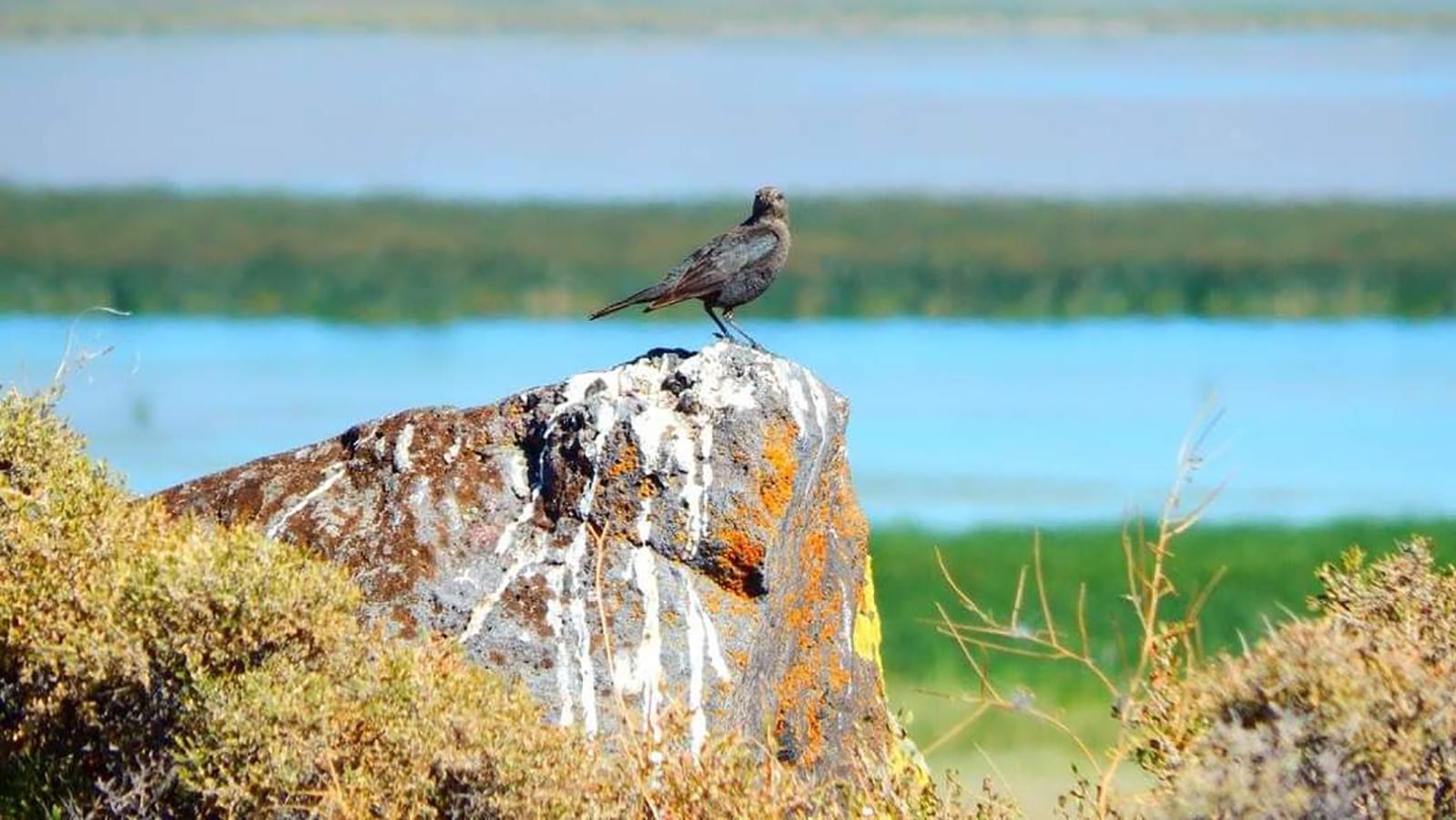Last updated: March 8, 2023
Place
East Wildlife Overlook at Lava Beds

NPS Emily Mai Hall
Parking - Auto
Stop at the East and West Wildlife Overlooks to view migratory and resident birds on the waters of Tule Lake in any season. Waterfowl are especially abundant here in the spring and fall as they pass through on their journey along the Pacific Flyway. Imagine the sights and sounds of up to six million birds here before the early 1900’s when lake drainage for agriculture began. You may encounter many other species of mammals, terrestrial birds, and reptiles throughout the Monument, especially if you journey away from roads and developed areas early or late in the day. Drive the nearby the Tulelake National Wildlife Refuge’s Wildlife Tour Route along the edge of modern-day Tule Lake for a more in-depth birding experience.
A Haven For Waterfowl
Up to a million migratory birds find shelter each year at Tule Lake and other wetlands within the Klamath Basin National Wildlife Refuges. Situated in the middle of the Pacific Flyway, these protected areas are critical resting and feeding grounds for migrating ducks, geese, and shorebirds.
In millennia past, the vast lowlands you see before you were covered with water and marshes. Imagine the sights and sounds of over six million birds here, where Modoc Indians once hunted from tule reed boats. By the early 1900s, the U.S. Bureau of Reclamation had drained thousands of wetland acres for farming, and hunters had killed massive numbers of birds. Although crops grown on refuge lands are a source of food for waterfowl, less than 25 percent of historic wetlands exist today. Migratory waterfowl and year-round Klamath Basin residents depend on these remaining wetlands for their survival.
To Learn More About Waterfowl
• Visit the Klamath Basin Refuges Visitor Center on Hill Road for information about Basin waterfowl.
• Visit the Lava Beds Visitor Center to obtain a bird list and explore other protected upland habitats that host a variety of raptors, ground-dwelling birds, and songbirds.
